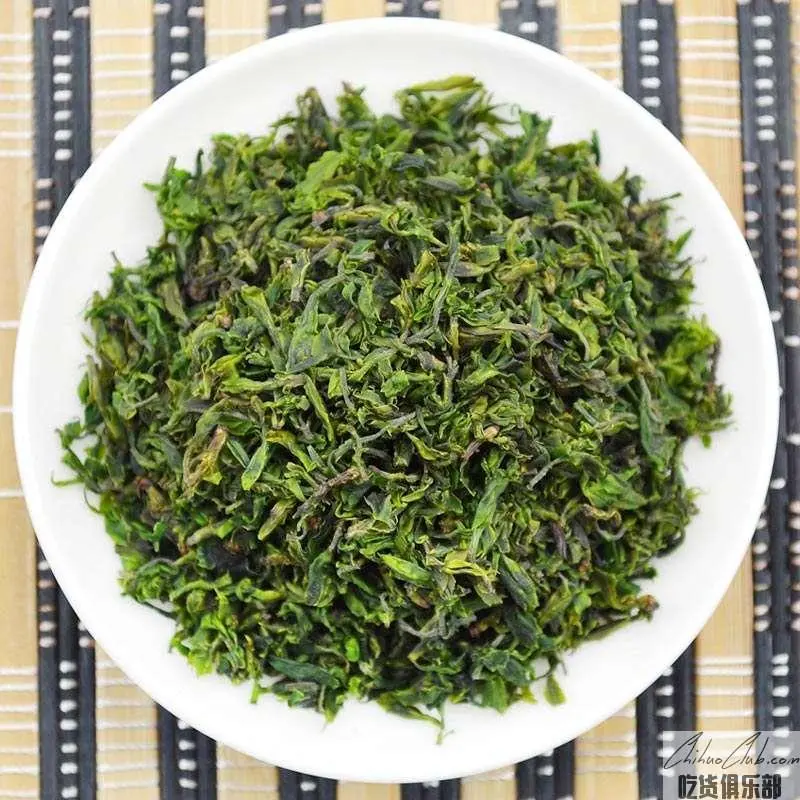
Junlian Kuding Tea
-
Update date::
-
Date of protection::
-
Protected range:Qilian Kudingcha GI products are protected in the administrative area of Qilian County, Sichuan Province.
-
Related origin:sichuan yibinshi yunlianxian yunlianxian-daxueshanzhen yunlianxian-fenglexiang yunlianxian-gaopingmiaozuxiang yunlianxian-haobazhen yunlianxian-leyixiang yunlianxian-lianhemiaozuxiang yunlianxian-muaizhen yunlianxian-tengdazhen yunlianxian-tuanlinmiaozuxiang yunlianxian-xunsizhen yunlianxian-yunlianzhen yunlianxian-zhenzhouzhen
-
Category:
Qilian Kuding Tea is produced in Qilian County, Yibin City, Sichuan Province. The shape is tight, the color is green, the soup is green and bright, the taste is slightly bitter, the leaves are green and bright, and the tea leaves are fresh and complete after brewing.
As a traditional health drink, Kudingcha has a history of more than 2,000 years. It is a rare and medicinal health drink plant in the world, with health care and pharmacological research. In different parts of China, there are 21 varieties of Kudingcha, which are called " Kudingcha" and widely used and medicinal in the local area, such as the holly leaf big leaf holly, Japanese hairy nymph. Qilian Kudingcha is a genus of the genus Asteraceae, a genus of the genus, and a genus of the genus, which is distributed in 18 towns and towns of the county. The traditional method is to put the dried branches and leaves into the pot for cooking until they are cooked, and then dried for a long time. The soup is yellow, sweet and refreshing, and has been used for drinking until now. Development Overview Qilian County is rich in Kudingcha resources and a unique growth environment. Since 1998, the county party committee and government have seized opportunities such as industrial restructuring and returning farmland to forests, giving full play to the resource advantages of Kudingcha and actively guiding farmers in the county to vigorously develop the Kuding tea industry as a pillar industry for farmers to increase their income. Cultivate. At present, the county has planted more than 50,000 mu of Kudingcha, mainly distributed in Shuangteng Town, Tuanlin Township, Qilian Town, Pats Town, Luomurou Town and other townships. It is engaged in 29 Kudingcha processing enterprises and has registered trademarks. And the corresponding brands reached 8 of them, including Awakening commerce limited liability company, which is the leading enterprise in Yibin City. The “Awakening” series of products have passed the quality inspection of China Tea Branch as “natural green food without pollution of agricultural residues”. Gold Award of the 2nd International Food Expo in Shanghai, won the double A-level green food certification. In 2002, the county produced 100,000 kilograms of high-quality Kudingcha. Qilian has become the largest Kudingcha base county in the country. Location Advantages Qilian County belongs to the mid-subtropical monsoon climate zone with good ecological environment, abundant rainfall and mild climate. The annual average relative humidity of the air is 81%, the annual rainfall is 1115.6mm, and the annual sunshine hours are 1050 hours. It is one of the national low sunshine value centers. The climate is very suitable for the growth of Kudingcha; the forest coverage rate is 39%, the microclimate is good, and the Kudingcha itself has less infections of pests and diseases, which is conducive to the construction of ecological tea gardens; the local land is mostly weak acid, the fertility is more than moderate, and the conditions are adjusted. The land is planted with Kudingcha; the arable land is in accordance with national standards and is rich in selenium. It is one of the four selenium-enriched counties in the country; the altitude is 3638.5m to 1777.2m, and the three-dimensional climate is obvious. Most places are suitable for the growth of Kudingcha; Qilian It is an agricultural county with no pollution industry. The atmosphere, soil and water source are especially suitable for the development of natural and non-polluting products, which has great advantages for the development of Kuding tea.
Qilian Kudingcha quality technical requirements (a) provenance. The hibiscus, the pedigree, and the peduncle. (2) Site conditions. Mountains with an altitude of 500m to 1200m within the protection zone. Yellow soil, yellow brown soil, pH 4.5 to 6.5, soil thickness ≥ 55cm, organic matter content ≥ 2.0%. (3) Cultivation management. 1. Seedling breeding methods: seedlings are grown by asexual reproduction. 2. Seedling colonization: planting in February or November each year; density of 30,000 plants per hectare. 3. Fertilizer management: Applying high-quality organic fertilizer per hectare ≥ 2.5 tons per year. 4. Environmental and safety requirements: The use of pesticides, fertilizers, etc. must comply with relevant national regulations and must not pollute the environment. (4) Harvesting. Every year from February to April, the morning dew is dried and the tea is picked. The tenderness is required to be within one bud and two leaves. (5) Process flow. Fresh leaves → agitation → killing → 揉捻 → hair baking → secondary 揉捻 → foot fire baking → packaging → finished products (six) quality characteristics. 1. Sensory features: the shape is tight, the color is green, the soup is green and bright, the taste is slightly bitter, the leaves are green and bright, and the tea leaves are fresh and complete after brewing. 2. Physical and chemical indicators: water extracts ≥ 45%, flavonoids ≥ 1.9%. 3. Safety requirements: Product safety indicators must meet the relevant regulations of the state for similar products.
Apply to:
Producers within the scope of protection of the geographical indication products of Qilian Kudingcha may submit an application to the Quality and Technical Supervision Bureau of Qilian County of Sichuan Province for the use of the “Special Mark for Geographical Indication Products”, which is reviewed by the Sichuan Provincial Bureau of Quality and Technical Supervision. AQSIQ announced the approval. The statutory testing agency of Qilian Kudingcha is designated by the Sichuan Provincial Bureau of Quality and Technical Supervision.